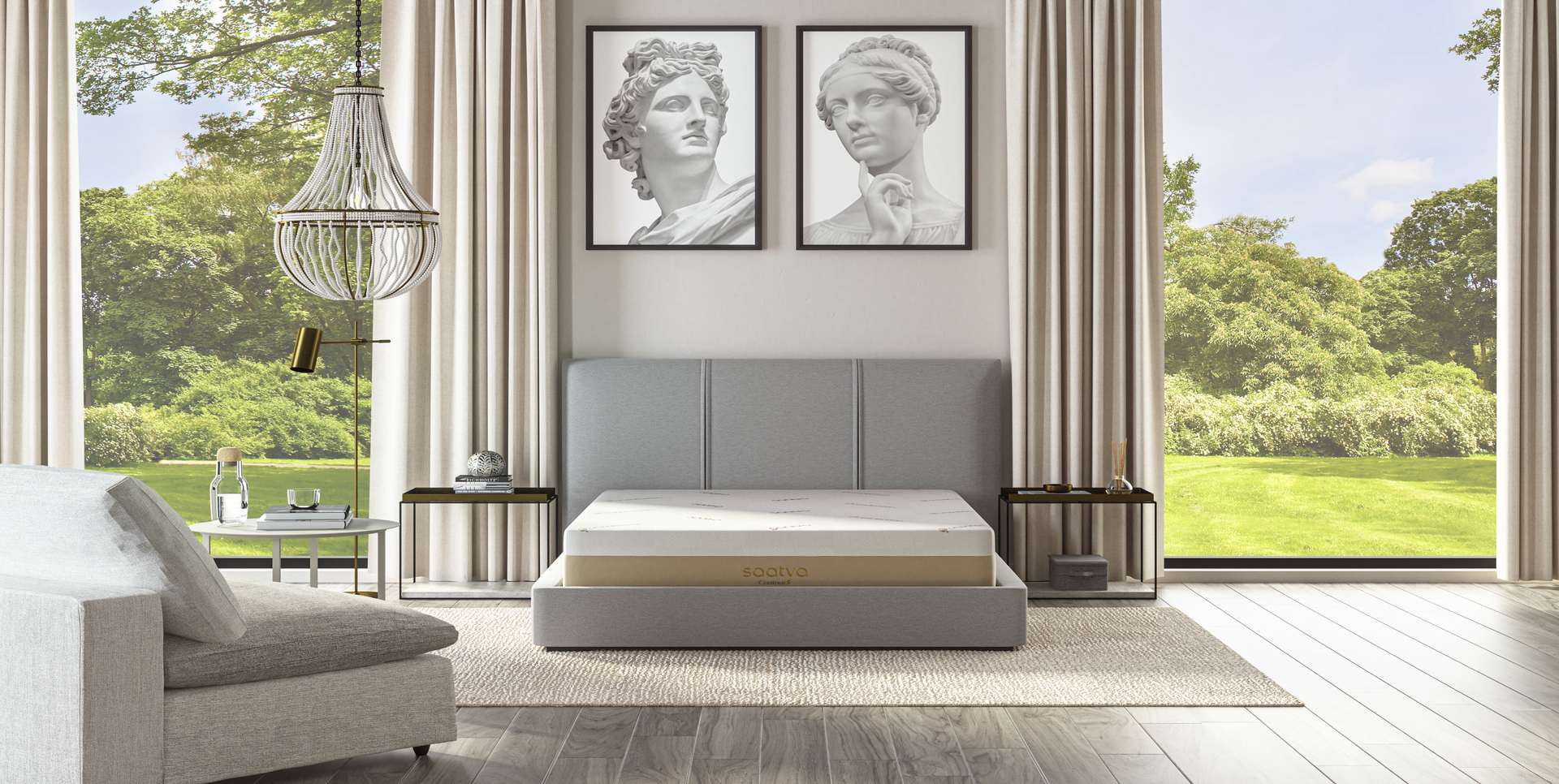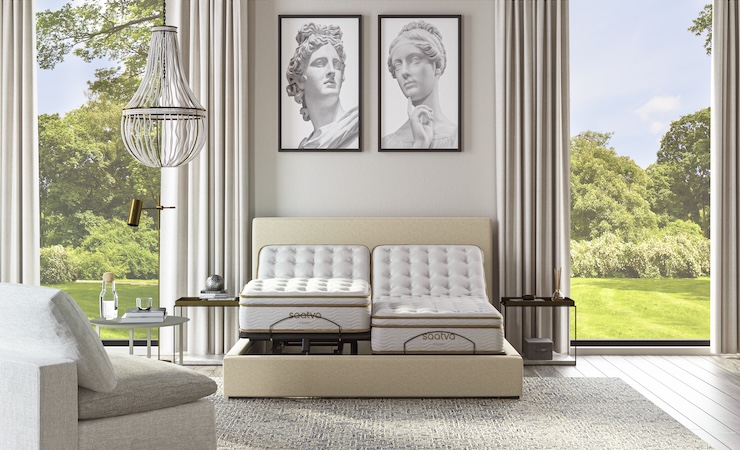Two words that perfectly capture how it feels when you realize an essential item like your mattress is kaput? Big. Sigh.
We get it—replacing an old mattress can feel like a heavy lift, especially if you’re a super-fastidious comparison shopper (known in psychology circles as a maximizer). Happily, there are ways to eke a few more decent nights’ sleep out of a flagging mattress while you finish your research. Start here:
Top your old mattress
If your old mattress is lumpy, saggy, or indented, a mattress topper can instantly boost comfort and support. Toppers come in a variety of materials, including feathers, wool, and even bamboo, but the most popular are made from latex or memory foam. Both provide excellent pressure relief for side sleepers and people with back or joint pain. One caveat: “Since they aren’t exactly inexpensive, you’ll need to decide whether or not putting this money toward a new mattress might deliver more bang for the buck,” says Derek Lakin, a researcher and consumer products expert at HighYa. Most cost less than $200, but premium toppers can run as much as $400.
Flip your old mattress
Many older mattresses are two-sided, meaning both sides are meant to be slept on. “If you own an older, flippable mattress, turning it over could extend its life,” Lakin says. The majority of newer mattresses, however, cannot be flipped—they’re constructed in such a way that only one side is meant to be slept on. A few signs your mattress is probably not flippable: it has a pillow-top on one side, or is made from layers of foam with different densities. If you’re not sure whether your mattress can be flipped, check the tag for a style number or name and Google it along with the words “owner’s manual” or “warranty information” to find specifics.
Clean your old mattress
Old mattresses can be repositories for quite a collection of dust mites, dead skin, fungi, and bacteria. This gunk can trigger allergies and make things musty. Regular maintenance will extend a mattress’s life. A few times a year, strip the bed and vacuum it thoroughly with the upholstery and crevice tools of a vacuum to suck up the surface grime. Then, if you’re feeling ambitious, follow these five steps for a thorough deep cleaning.
Cover your old mattress
Putting a mattress protector on your newly clean mattress will help keep dust and germs from building back up. (Bonus: you can use the cover to protect your new mattress, too, once you invest in one.) “Often, these mattress covers feature very small pores that prevent skin flakes and dust mites from making their way through, along with waterproof surfaces that still allow heat and moisture to escape, minimizing mold growth,” says Lakin. This is especially important if you are allergic to dust mites or live in a warm, wet climate, since the creatures thrive in heat and moisture. Mattress covers can range in quality and price, from about $15 to $80. Here’s a comprehensive review and comparison chart that can help you pick one.
Support your old mattress
Another quick fix for a saggy, no-longer-supportive mattress? A plain old sheet of plywood. Exact methods differ, but the handymen over at Hunker suggest measuring the main area of indentation or sag and getting a piece of plywood cut to match; then just slide it in between your mattress and box spring. (This may sound a bit shoddy, but plenty of DIY experts recommend it!) There are also a couple of products meant specifically for this purpose: Mattress Helper and No Sags support mats are available at Amazon, Target, and other large online retailers for $40-$140, depending on size. Note that any such solution is meant to be temporary; if the mattress components have started to break down, shoring it up won’t help for long. (Is your old mattress sliding around? Here’s how to keep your mattress from sliding.)
When to toss your mattress
If you constantly wake up sore, stiff, or numb, or your mattress is showing obvious signs of wear, then it’s probably time to get rid of your old mattress. Most mattresses last around 10 years, but “like any other consumer good, how long a mattress lasts largely depends on how often it’s used and how well it’s cared for,” Lakin says. (Here are signs you need a new mattress.) Quality counts, too. “A high-end mattress with a protective cover and plenty of airflow from an elevated platform or box spring will almost certainly last longer than a bargain model that’s kept directly on the floor or in a humid space,” says Lakin. Good advice to make sure your next mattress goes the distance.
When you’re ready to replace an old mattress, these four questions will help lead you to the right choice.







